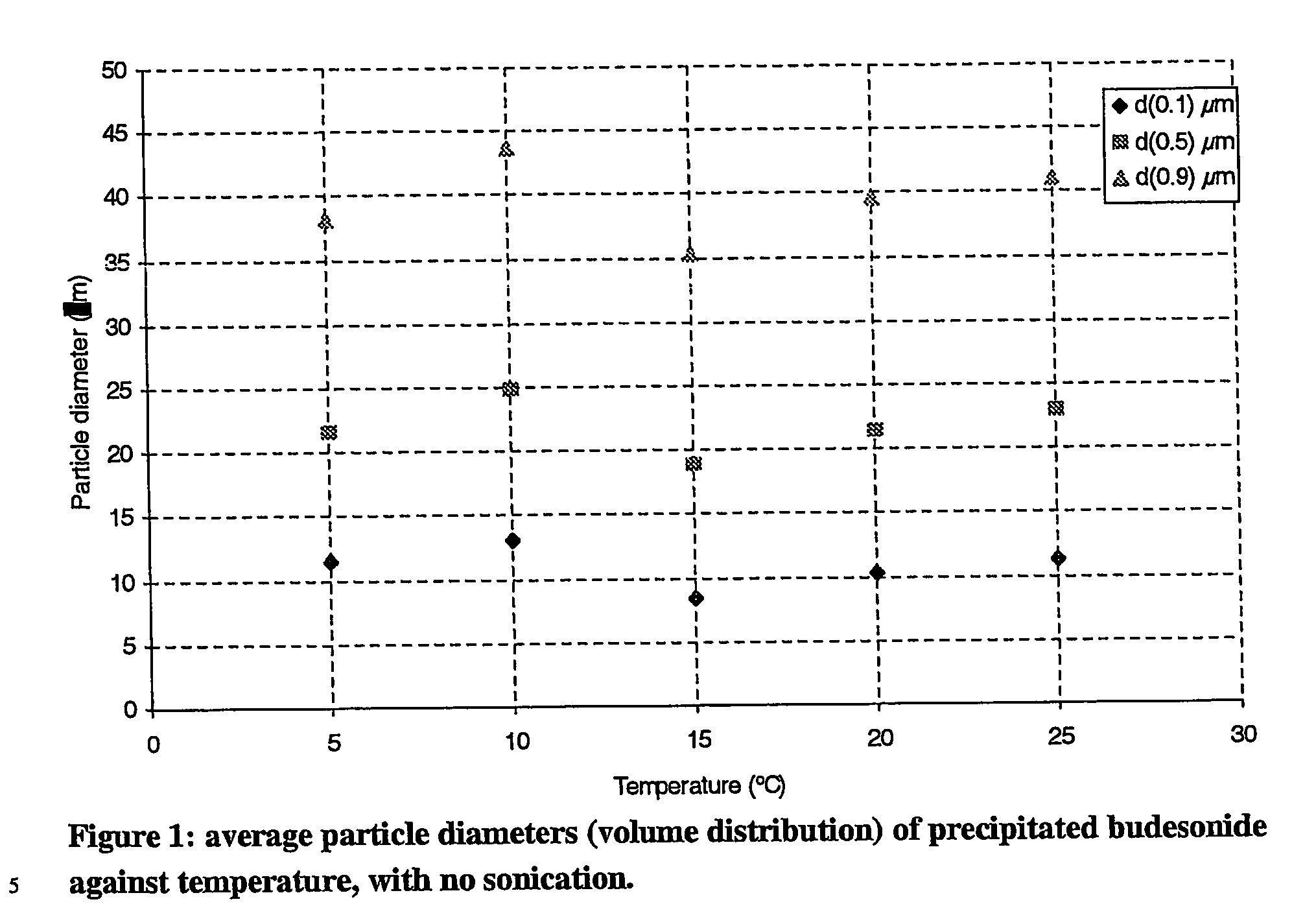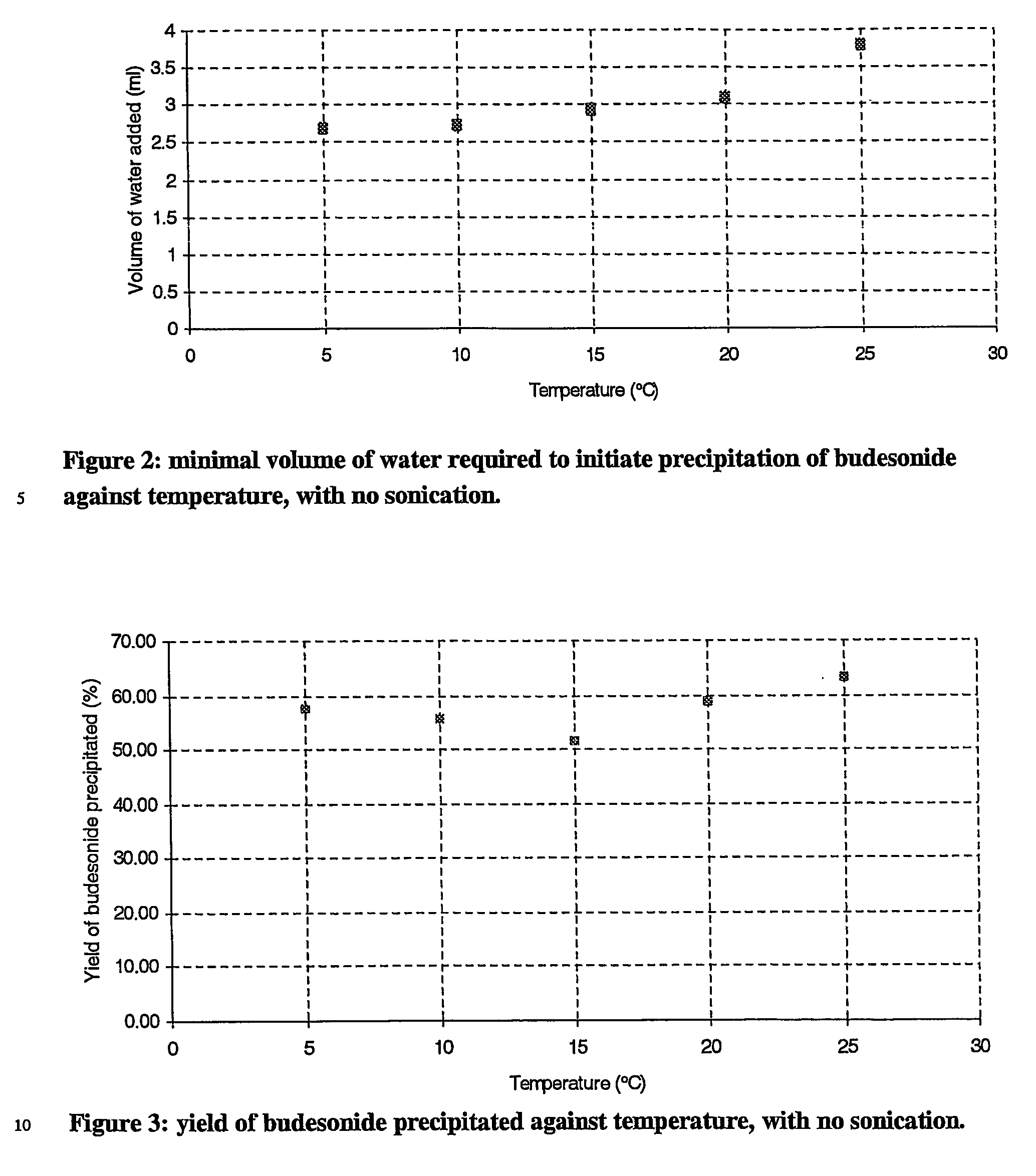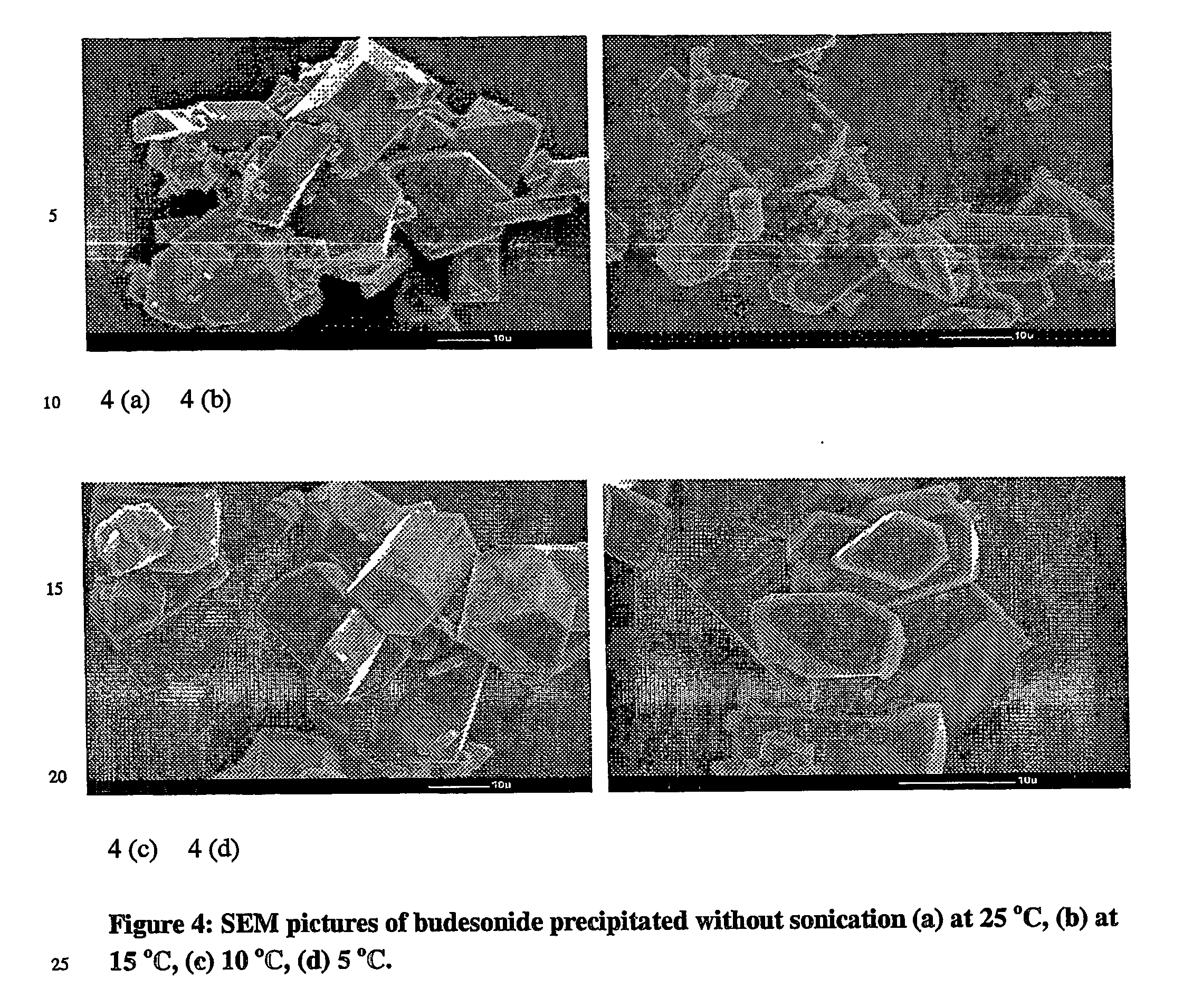Novel process
- Summary
- Abstract
- Description
- Claims
- Application Information
AI Technical Summary
Benefits of technology
Problems solved by technology
Method used
Image
Examples
example 1
5.1. Example 1
Influence of Temperature on the Crystallisation of a Hydrophobic Drug with No Sonic Energy
[0068] 10 ml of a saturated methanol solution of budesonide was placed in a jacketed beaker connected to a water bath. In addition to controlling the temperature, the beaker was placed on top of a magnetic stirrer with a speed setting such as to avoid the formation of a vortex. Water was added via a burette until the solution became turbid. This was then allowed to mix for 15 mins. After filtering and freeze-drying the samples, they were analysed.
[0069] Sizing results of these particles have been summarised in table 3. FIGS. 2 and 3 show the variation of the average diameters and yield with temperature.
TABLE 3particle diameter, yield of crystals and volume of water required for theprecipitation of budesonide at varying temperatures with no sonication.DiametersTemperature(μm)YieldVolume of water(° C.)dv(0.1)dv(0.5)dv(0.9)(%)(ml)511.421.638.257.52.71013.024.843.755.72.7158.518.8...
example 2
5.2 Example 2
Influence of Temperature on the Crystallisation of a Hydrophobic Drug with Excess Precipitant and No Sonication
[0073] The previous study was repeated using full precipitation, i.e. adding excess water, the following results were obtained (see table 4 and FIG. 6).
TABLE 4influence of temperature on particle diameter of budesonide particles fullyprecipitated without sonication.Volume of waterDiameters (μm)(ml)dv(0.1)dv(0.5)dv(0.9)55.7512.0123.26105.9114.7631.37155.9413.7628.83206.6916.6636.81257.6117.8236.45
[0074] SEM pictures of the crystallised particles have been reproduced on FIG. 7. The pictures of budesonide particles fully precipitated from solution indicate that thinner clusters of sheets tend to form as opposed to octahedral crystals formed during minimal precipitation. The XRPD of these ‘sheets’ were performed and the results obtained confirm that the samples are crystalline (see FIG. 8).
[0075] The particles formed with a saturated amount of precipitants are ...
example 3
5.3 Example 3
Comparison of Crystal Characteristics Between a Hydrophobic and Hydrophilic Drug
[0076] The procedure set out in example 1 was followed. Budesonide and formoterol were precipitated without sonication under identical conditions to see their difference in crystalline shape and size. The following parameters were used whilst undertaking precipitation (table 5).
TABLE 5precipitation conditions for comparison of particles size and shape withoutsonication between a hydrophobic and a hydrophilic drug.DrugBudesonideFormoterolSolution10 ml saturated budesonide in2 ml saturated formoterol inMethanolMethanolVolume of2.7 ml water10.1 ml waterprecipitantFilter0.1 μm PVDF durapore filters0.2 μm PTFE filtersTemperature10° c.Time15 minutesAgitationOn
[0077] The following results were obtained (table 6):
TABLE 6comparison of particle diameters for a hydrophilic and a hydrophobic drugcrystallised from a saturated methanol solution at 10° C.,without sonication.Diameters (μm)Drugdv(0.1)dv...
PUM
| Property | Measurement | Unit |
|---|---|---|
| Fraction | aaaaa | aaaaa |
| Length | aaaaa | aaaaa |
| Reaction temperature | aaaaa | aaaaa |
Abstract
Description
Claims
Application Information
 Login to View More
Login to View More - R&D
- Intellectual Property
- Life Sciences
- Materials
- Tech Scout
- Unparalleled Data Quality
- Higher Quality Content
- 60% Fewer Hallucinations
Browse by: Latest US Patents, China's latest patents, Technical Efficacy Thesaurus, Application Domain, Technology Topic, Popular Technical Reports.
© 2025 PatSnap. All rights reserved.Legal|Privacy policy|Modern Slavery Act Transparency Statement|Sitemap|About US| Contact US: help@patsnap.com



